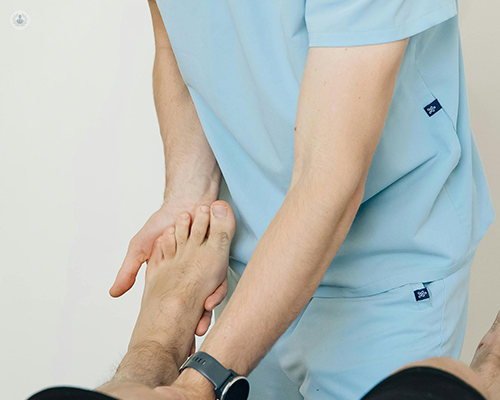Top 5 common foot problems and how to prevent them
Written in association with:Foot problems can significantly affect daily life, from causing discomfort to limiting mobility. This article will explore the top five common foot issues: bunions, fallen arches, hammertoes, ingrown toenails, and plantar fasciitis. We will also provide practical tips on how to prevent these conditions from occurring or worsening.

1. Bunions: understanding and preventing this common foot deformity
Bunions are bony lumps that form on the side of the foot, typically at the base of the big toe. They occur as a result of genetics, injuries or prolonged use of poor footwear. Over time, the big toe joint becomes red, sore, and swollen. This condition can lead to discomfort and difficulty in walking.
Prevention tips:
- Wear wide shoes: choose shoes with a wide toe box to reduce pressure on the big toe joint.
- Avoid particularly narrow shoes: this type of shoe can exacerbate the problem by pushing the toes together. .
- Use orthotics: custom insoles can help redistribute pressure and improve foot alignment.
2. Fallen arches: what they are and how to keep your arches strong
Fallen arches, also known as flat feet, occur when the arch of the foot collapses, causing the entire sole to come into contact with the ground. This condition can lead to foot pain, swelling, and issues with posture.
Prevention tips:
- Wear supportive shoes: shoes with good arch support can help maintain proper foot alignment.
- Use orthotic inserts: insoles designed for flat feet can provide additional support and comfort.
- Strengthening exercises: exercises like calf raises and toe curls can strengthen the muscles supporting the arch.
3. Hammertoes: recognising the condition and tips for prevention
Hammertoes are deformities where one or more toes are bent downward at the middle joint. This causes the toe to resemble a hammer. It can lead to pain, difficulty in walking, and problems finding suitable footwear.
Prevention tips:
- If you notice that the toe is starting to bend at the middle joint the best thing to do is prevent the skin becoming irritated.
- This can be achieved through wearing shoes with a deep toe box or open toes shoes
4. Ingrown toenails: causes, symptoms, and prevention strategies
Ingrown toenails occur when the edge of the toenail grows into the surrounding skin, causing pain, swelling, and sometimes infection. They are most common in the big toe.
Prevention tips:
- Trim nails properly: cut your toenails straight across and avoid rounding the edges.
- Wear well-fitting shoes: tight shoes can press the toes together, increasing the risk of ingrown toenails.
- Keep feet clean and dry: good hygiene can prevent infections associated with ingrown nails.
5. Plantar fascitis: understanding heel pain and how to prevent it
Plantar fasciitis is a common condition causing heel pain. It occurs when the thick band of tissue (plantar fascia) connecting the heel to the toes becomes inflamed. This condition is characterised by sharp, stabbing pain, especially in the morning.
Prevention tips:
- Wear supportive footwear: choose shoes with good arch support and cushioning.
- Stretch regularly: stretch the calf muscles and the plantar fascia to keep them flexible.
- Avoid prolonged standing: if your job requires standing, take breaks and sit when possible.
If you would like to book a consultation with Mr Sinnett, do not hesitate to do so by visiting his Top Doctors profile today.


